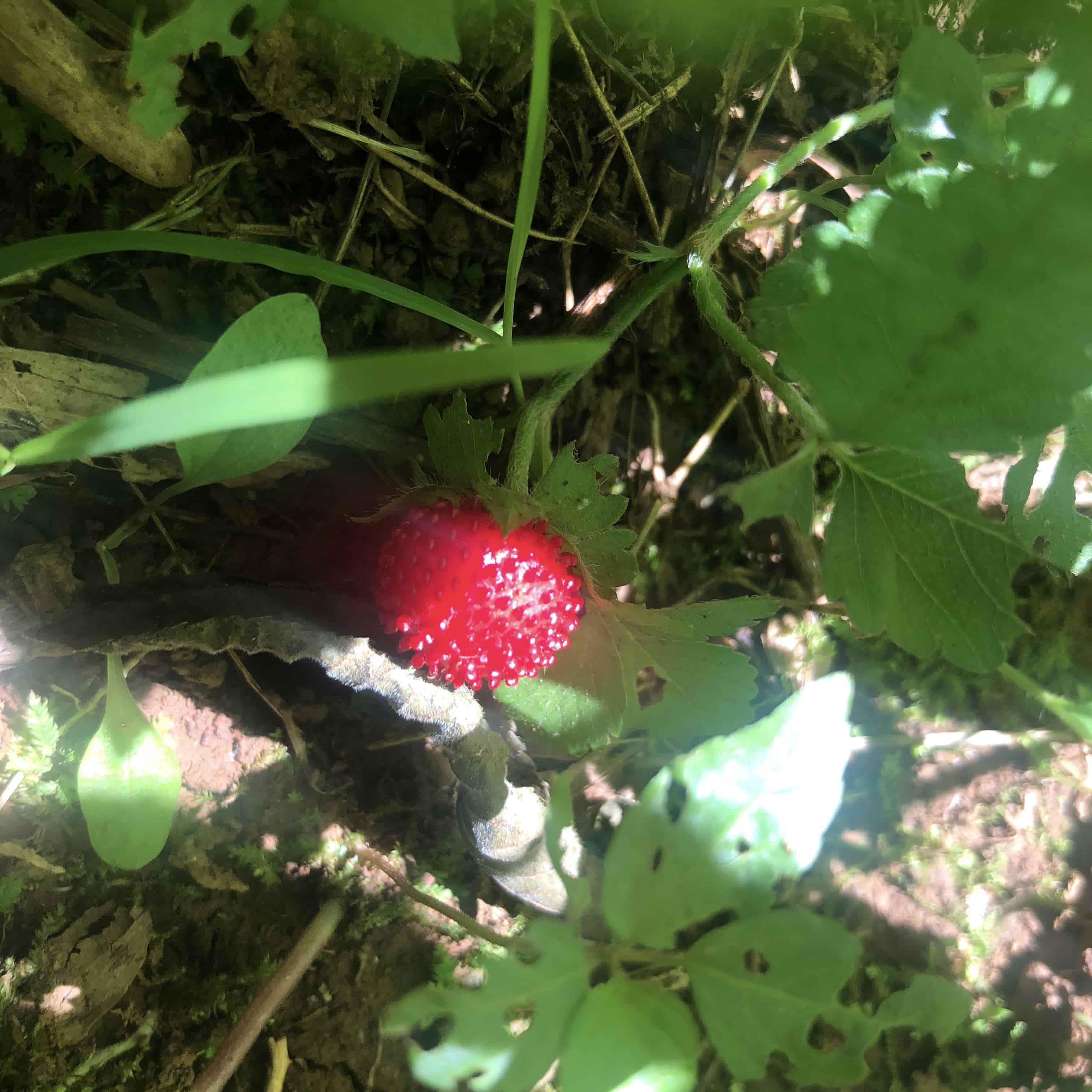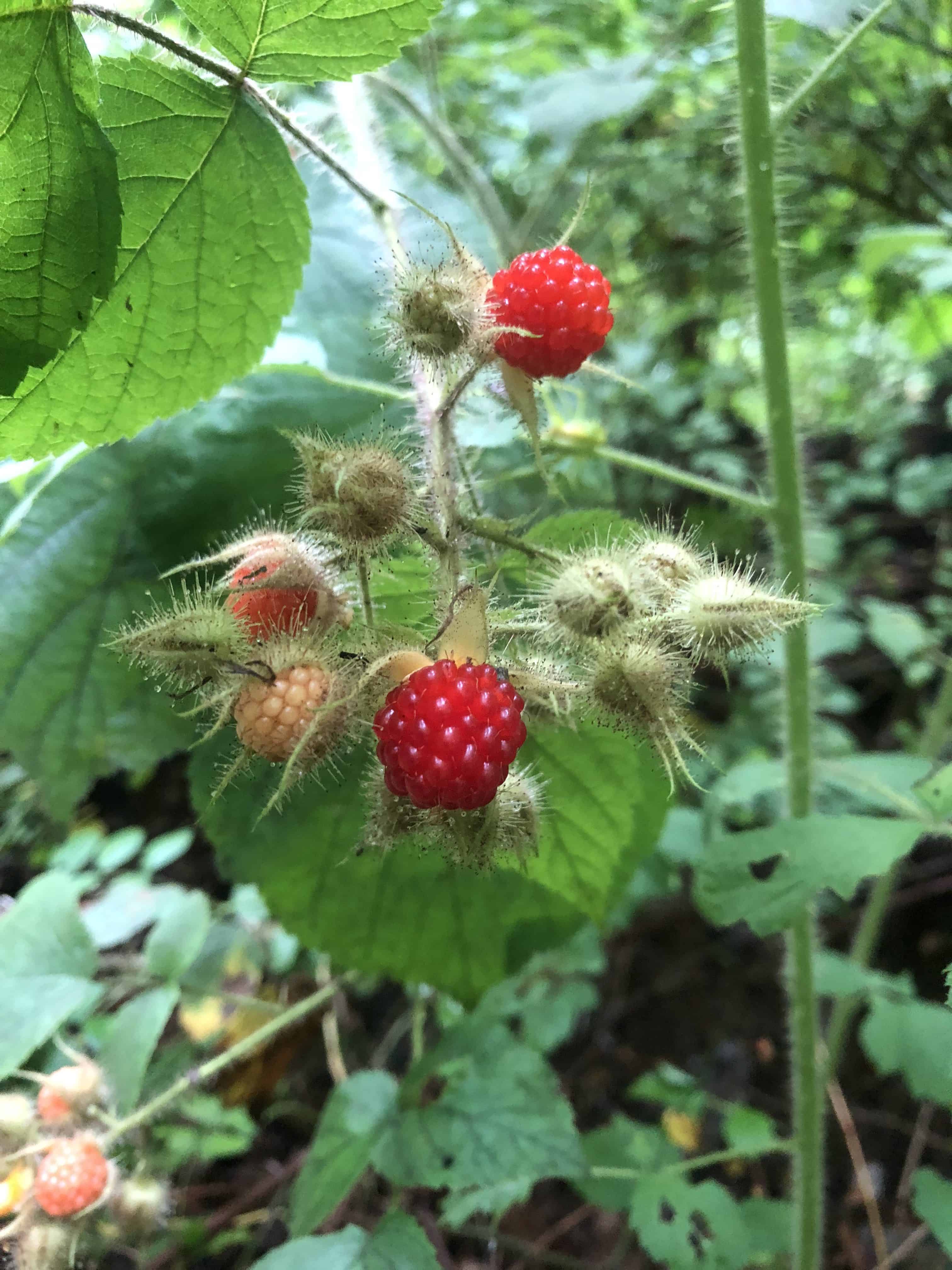Every year around this time the wild raspberries come out and start to ripen. I'm by far not a plant expert, but wild raspberries are pretty easy to spot, even for a novice. They are a tasty treat well worth the effort required to pick them. You can easily find them in Northern Virginia, along the C & O Canal, or along the Appalachian Trail in Virginia.
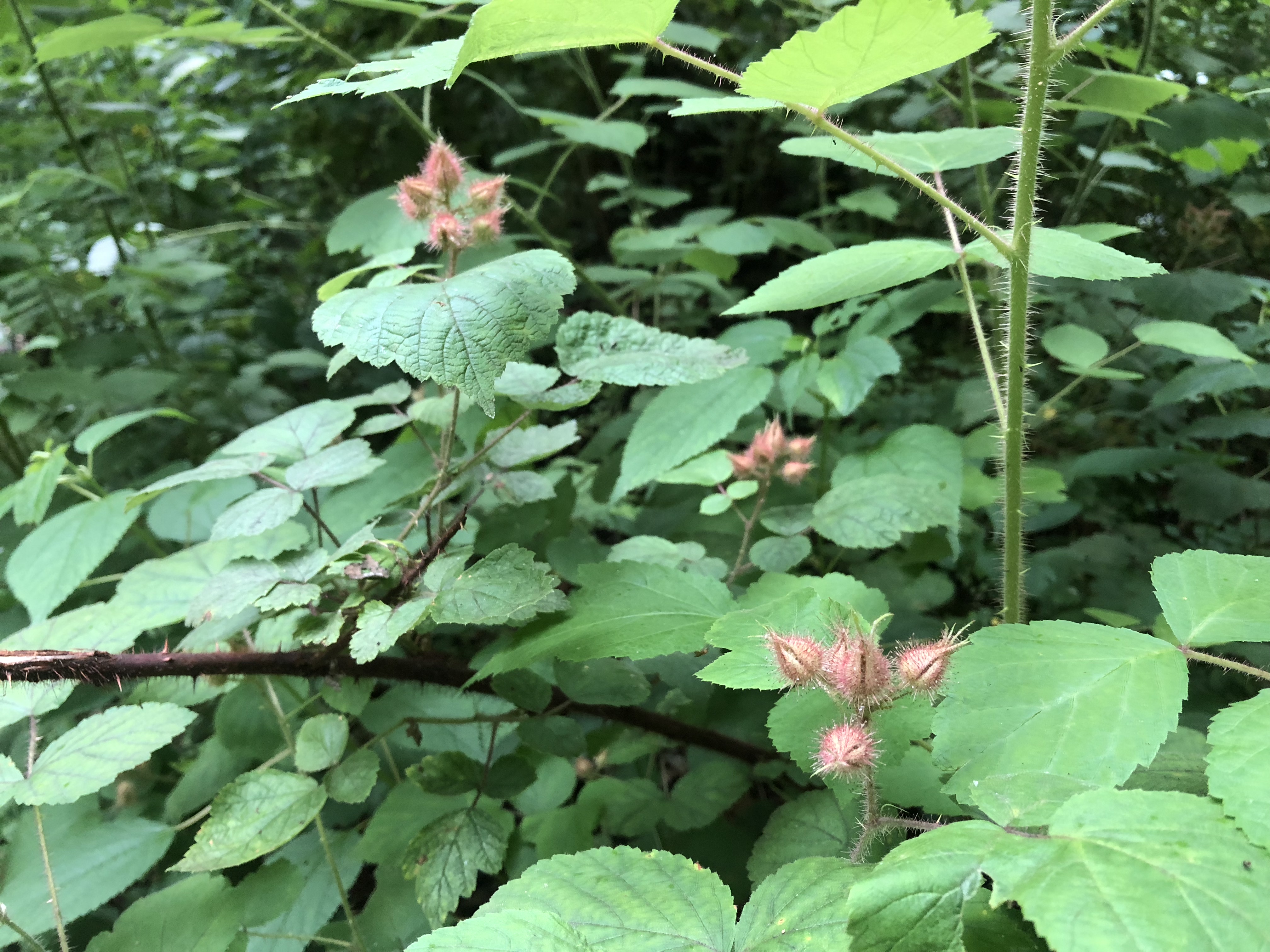
This is a nice example of a mature raspberry bush. Raspberry plants have two kinds of stems which are called canes. The canes live two years. Primocanes are a year old and floricanes are two years old and produce fruits. Once they fruit, they die. Canes may be prickly or smooth. They have compound leaves which can be smooth or hairy. The leaves have serrated edges. Raspberry and blackberry bushes are sometimes referred to as bramble. If you are cleaning up a wooded area, you might want to consider leaving the bramble to have your own berry patch.
Wild Raspberries from start to finish
Although usually called raspberry and blackberry, they are actually drupelets which are aggregates of drupes. Each section contains a seed. One difference between raspberries and blackberries is that the core of the raspberry remains on the stem when picked. Also, blackberries are usually a little bigger than raspberries.
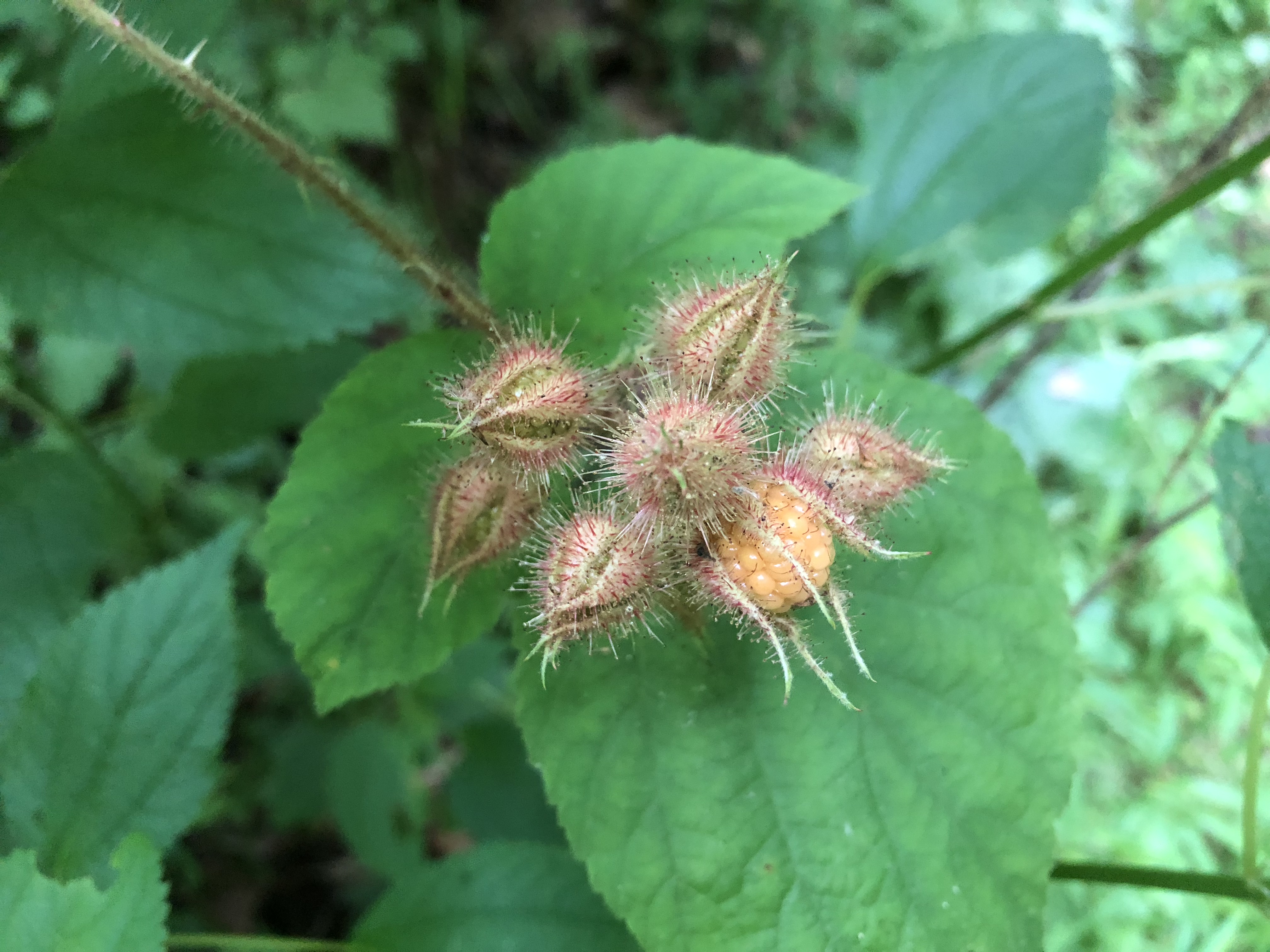
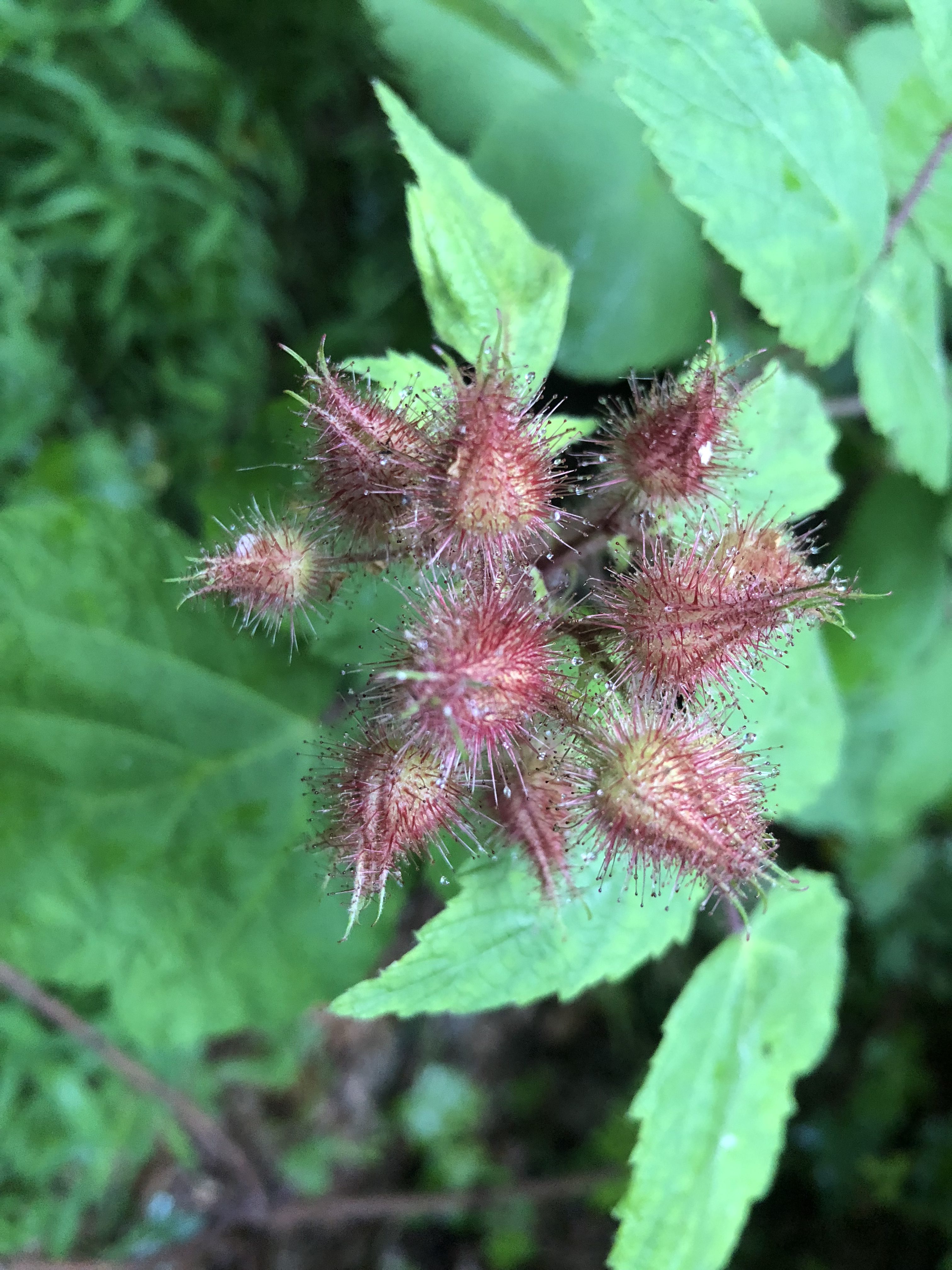
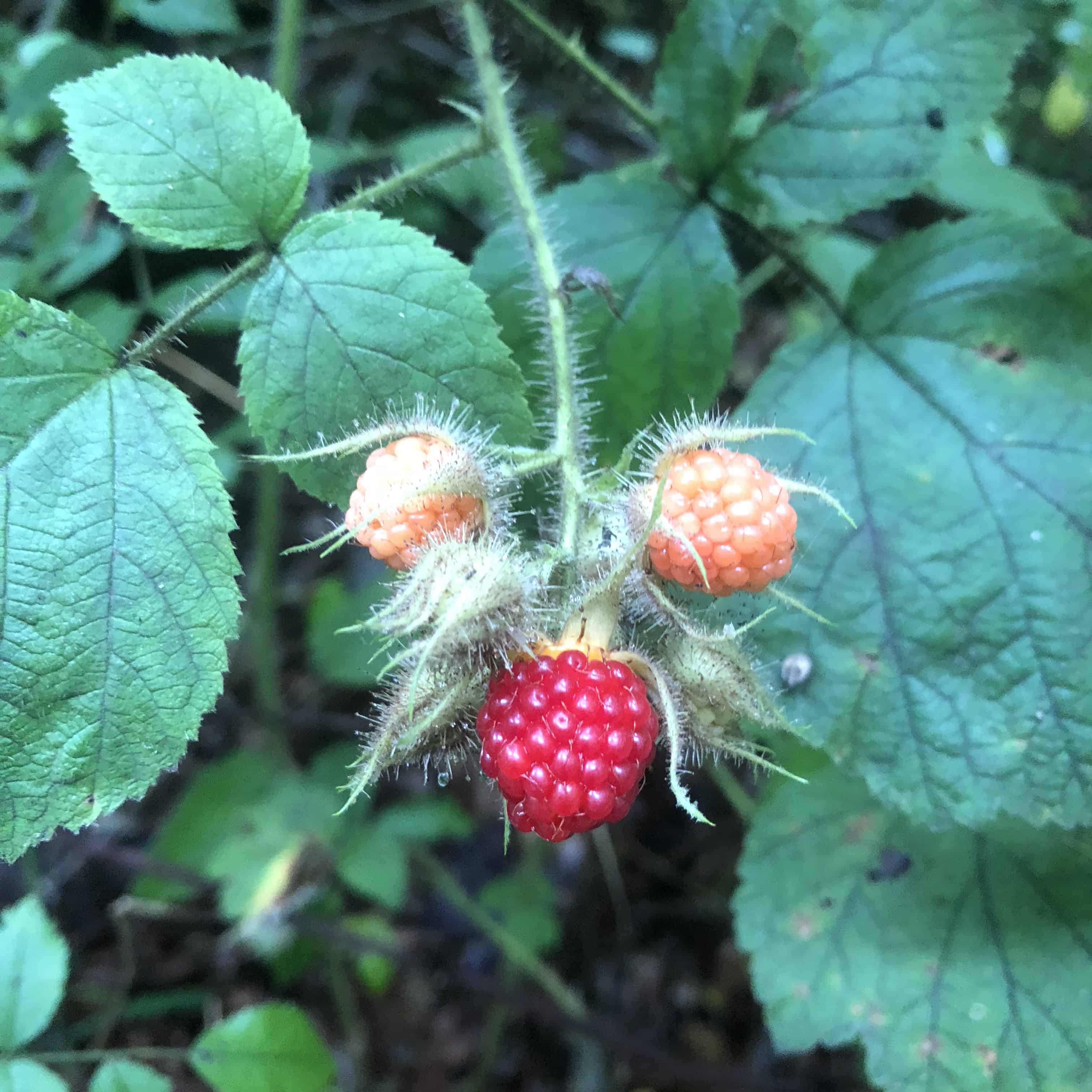
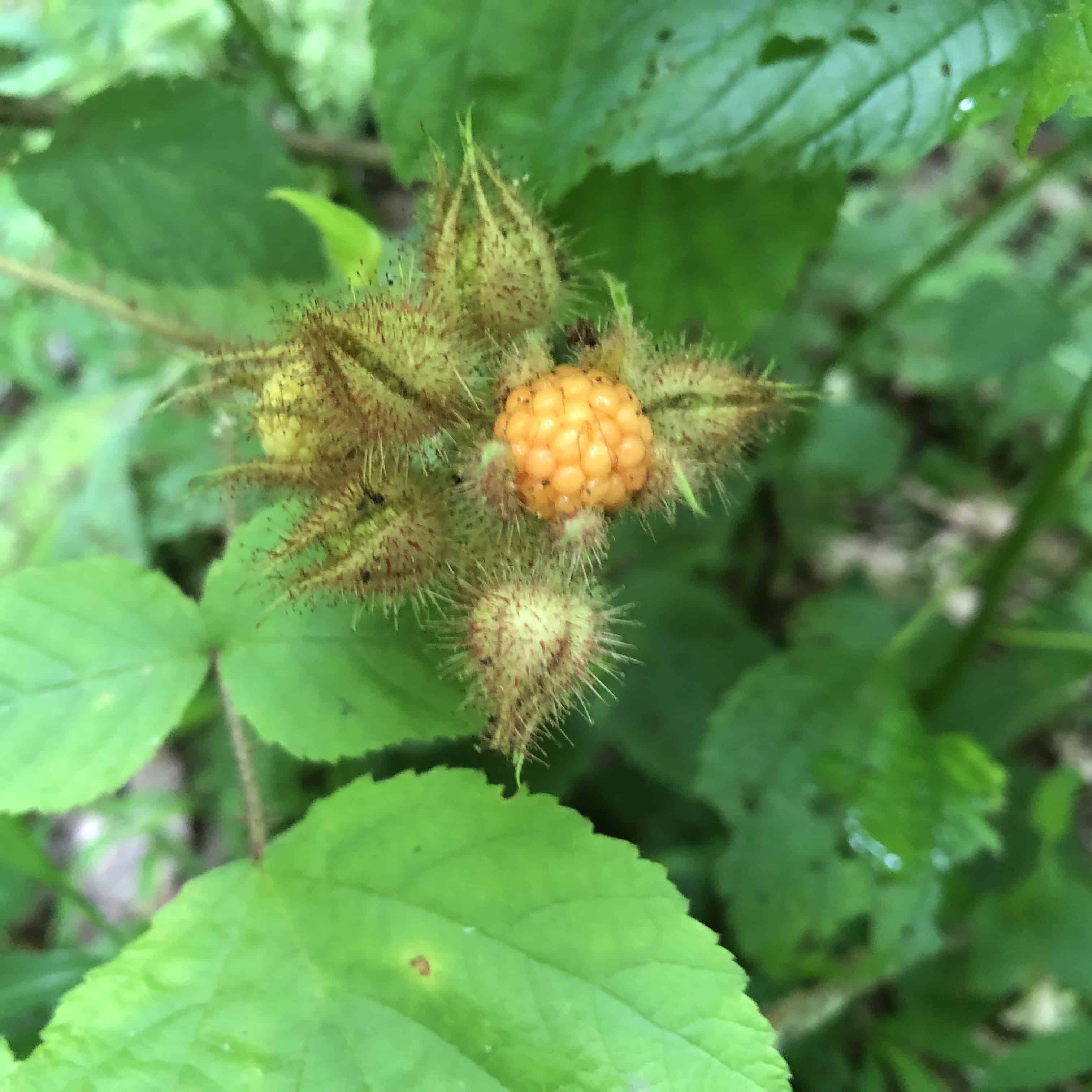
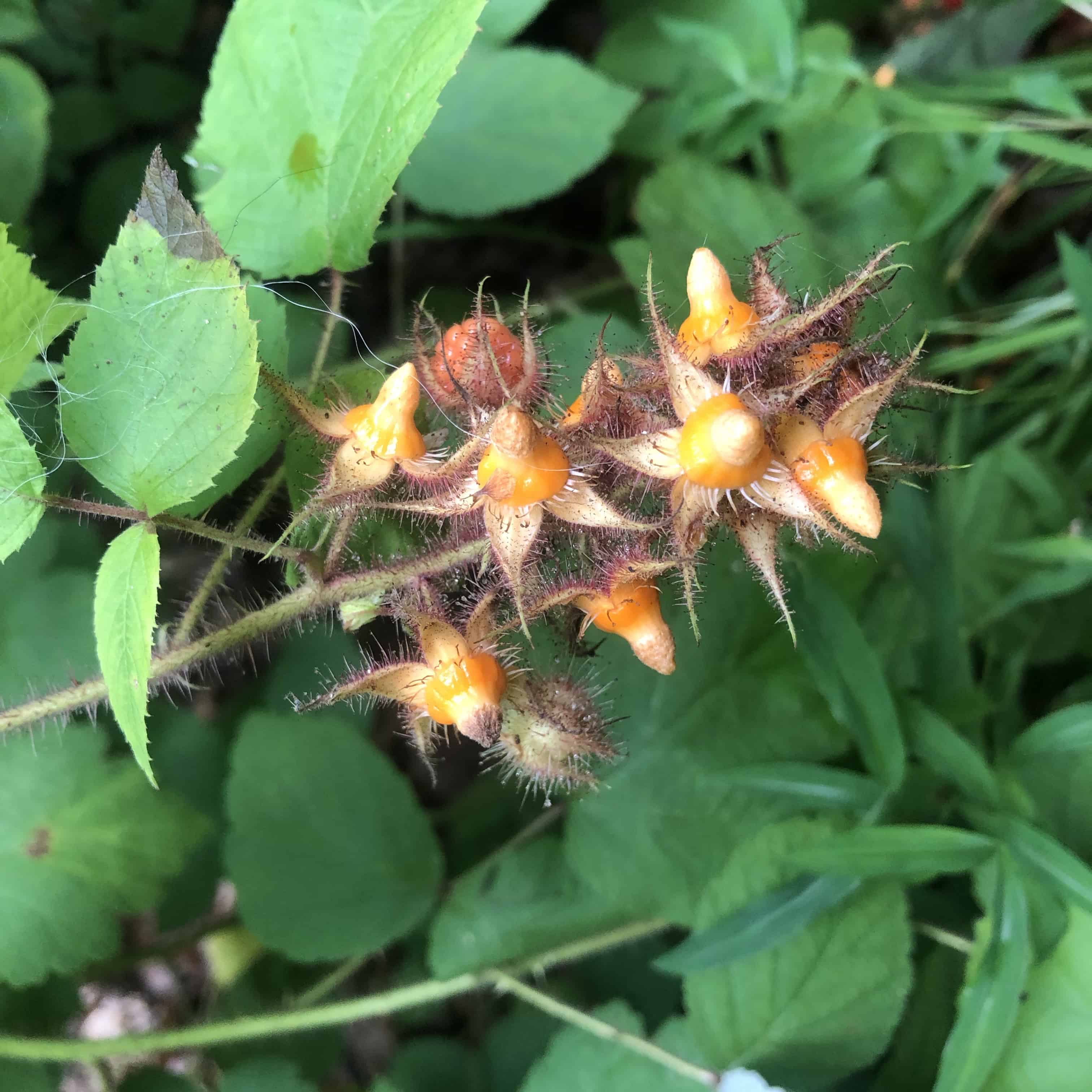
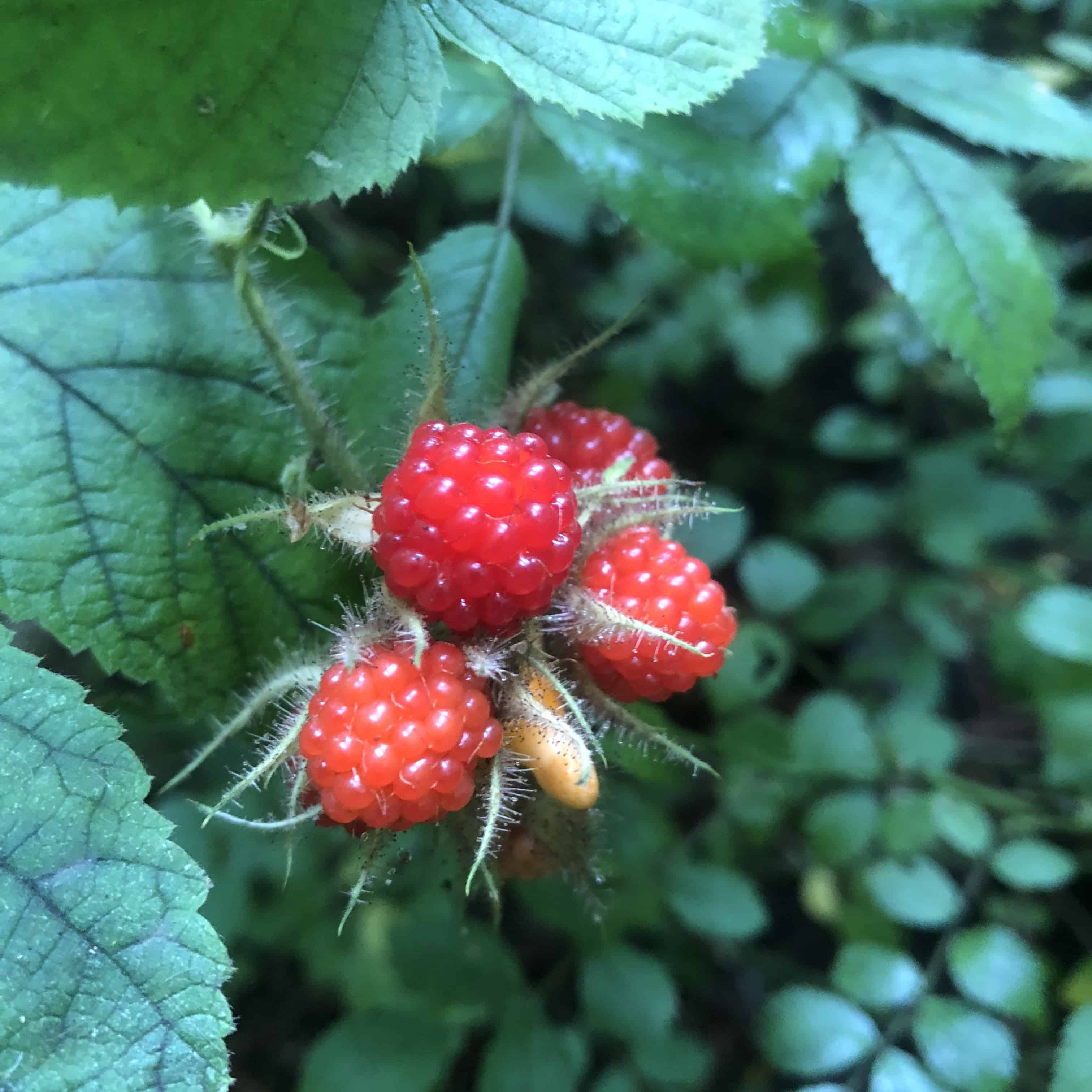
Always eat wild plants with caution
Before eating wild plants and foliage, do some research and be knowledgable about what you are doing. The mock strawberry could be mistaken for a raspberry if you have never seen a wild raspberry. It's not poisonous, but demonstrates that there are imposter plants in the forest.
